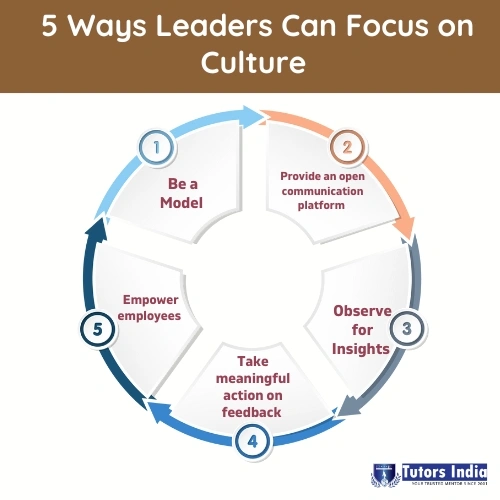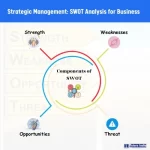Impact of Leadership on Organizational Performance
Introduction
It is impossible to overstate the significance of Leadership in an organization when it comes to creating a vision and mission statement, setting objectives, formulating plans of action to achieve those objectives, organizing and coordinating internal operations, and developing strategies, policies, as well as procedures to do so in the organization for better organizational Performance (Al Khajeh, 2020).
Effective Leadership Styles
Great leaders frequently have similar traits. These include looking for value creation, taking chances, inspiring and motivating employees, setting goals, and having a long-term perspective for business performance. In contrast, managers tend to minimize risks, adhere to rules and regulations, and regulate and monitor.
However, not every leadership style is the same. It’s still unclear how to thoroughly understand the subject of Leadership. According to previous literatures reviewed, several styles can be effective in various settings depending on the organization. While a law business may need diligent, down-to-earth individuals who will follow the rules and uphold the existing quo, a digital startup that focuses on growth and disruptive innovation may need outgoing, upbeat leaders. Among the prevalent leadership models are:
Democratic Leadership
A democratic leader based decisions on suggestions and feedback from their team. In other words, they include everyone involved in the decision-making cycle. However, this leadership style cannot be employed over the long term due to disadvantages, including losing the leader’s authority, disagreements, and poor communication among team members.
Autocratic Leadership
Autocratic Leadership is the exact opposite of the democratic Leadership Style. The opinions of team members are not taken into consideration while making any commercial decisions. On the other hand, leaders insist that people adhere to their choices, which is unsustainable in the long run.
Laissez- Faire Leadership
Laissez-faire leadership has drawbacks, although letting individuals work whatever they see fit may empower them. It might impede team development and make things challenging for less seasoned employees who might benefit from guidance as they ramp up. Roles and responsibilities may also be unclear, leading to a culture of siloed work where people may function alone rather than together. Keeping this leadership style in check is essential since it might lead to losing critical professional development and education chances.
Strategic leadership style
The capacity to persuade others to take voluntary actions that improve the chances of the organization’s long-term success is referred to as strategic Leadership. In lay terms, it refers to the leader’s ability to articulate a strategic vision for the organization and persuade them to achieve it using the appropriate methods and instruments (Simpson, 2022).
5 Ways Leaders Can Focus on Culture
Every leadership plan should strongly emphasize inspiring others since leaders have a massive impact on an organization’s culture and Performance. There are numerous ways to accomplish this organizational culture.

It is mandatory for those in positions of authority to live up to the culture they promote. If trust is ever betrayed, a sincere apology (and possible consequences, depending on the circumstances) had better come quickly after (Douglas et al., 2022).
Observe for Insights
It can often be very instructive to step back and observe what is happening in the office. Pay attention to minute things about the workplace and how people behave. When one steps back, one may be astonished by how much one can learn.
Provide an open communication platform
Answers can be supplied immediately when everyone can ask senior leaders questions and give employees a voice. According to Sampe et al. (2023), this approach reiterates the company’s objectives and core values.
Take meaningful action on feedback
The value of requesting feedback is based on the subsequent action. It will not get away with acting like the audience is listening.
Empower employees
More creative thinking and problem-solving are made possible in an autonomous culture. Employees are given responsibility, and the freedom to contribute will perform above everyone’s expectations.
Conclusion
The effect of leadership styles on organizational Performance has been the main focus of this article. Specifically, four leadership styles were highlighted (Khan & Adnan, 2020) and its study shows that leadership style and organizational Performance are linked and that these effects can be both favourable and harmful. Offering opportunities, creating a sense of community, and involving staff in decision-making are all crucial components of effective Leadership.
References
- Al Khajeh, E. H. (2020). Impact of Leadership Styles on Organizational Performance. Journal of Human Resources Management Research, 1–10.
- Douglas, S., Merritt, D., Roberts, R., & Watkins, D. (2022). Systemic leadership development: impact on organizational effectiveness. International Journal of Organizational Analysis, 30(2), 568–588.
- Khan, A. Z., & Adnan, N. (2020). Impact of leadership styles on organizational Performance. International Journal of Management Sciences, 2(11), 501–515.
- Sampe, F., Kusnady, D., & Supendi, D. (2023). The Effect of Leadership Style and Communication on Employee Performance. Jurnal Ekonomi, 12(01), 207–217.
- Simpson, O. (2022). The Impact Of Effective Leadership On Organisational Performance.

 Previous Post
Previous Post Next Post
Next Post